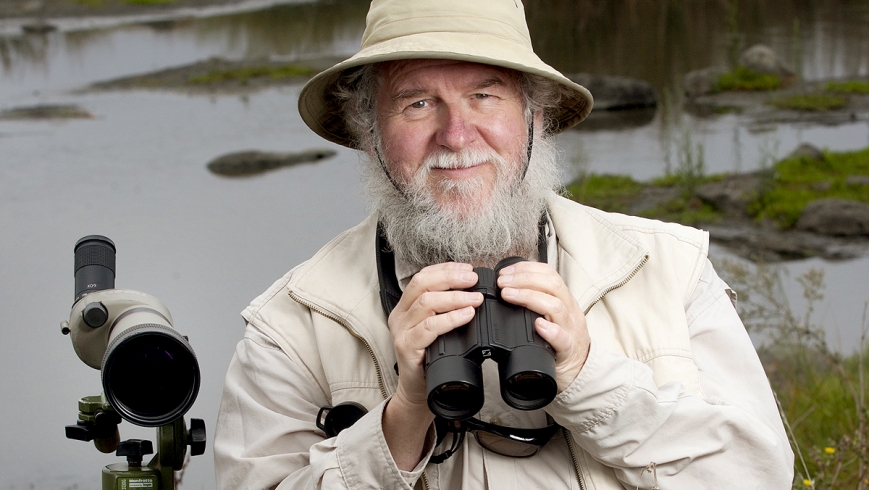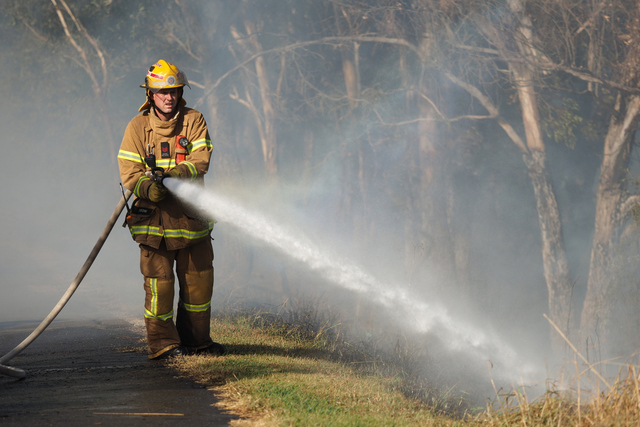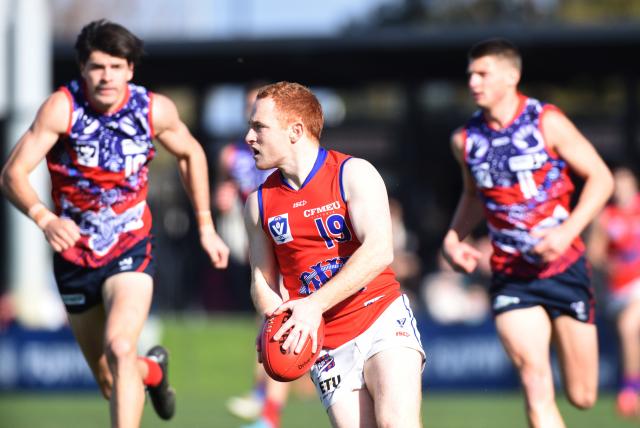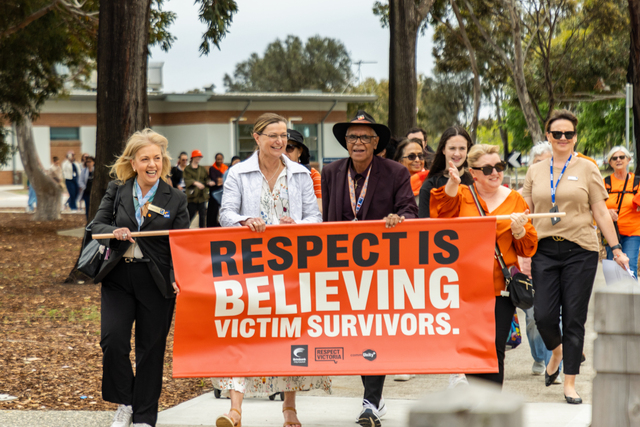They’re not exactly birds of a feather, but spotters and twitchers share equal enthusiasm for documenting their treasured subjects, as Sarah Harris observes.
TO the casual onlooker, Michelle Delaney might just have stopped at Footscray’s Bunbury Street railway overpass to admire the city backdrop, but her eyes are firmly on the track.
“Ah, here you go … this is the MS4 and that’s NR13 on the lead,” Delaney says, instantly recognising an old friend as it approaches the tunnel.
Delaney may just be the only woman in Australia who can correctly identify every locomotive and lash-up (locomotives linked together) in and out of the Footscray freight portal, but she is by no means alone in her interest.
Trainspotting – the quintessential boys’ own pastime of the ’50s and ’60s – is re-emerging from the underground as a thoroughly hi-tech hobby.
Forget the anorak and pocket journal. The gunzels, as rail enthusiasts proudly call themselves, are streaming live, employing ultra-slim laptops and phone apps, with much of the action being captured on the South Kensington-West Footscray line.
“The western suburbs is the main playing field for trainspotters because this is where most of the freight comes through,” Brian Evans, owner of Railpage, Australia’s largest railways-oriented website, explains.
“Bunbury Street is the mecca. When people want to spot trains, this is one of the best places in Melbourne.” It was also the logical place to install Railpage’s first IP webcam or “railcam”, fulfilling Evans’ ambition to make the hobby accessible to everyone.
Rail fans across the country can now gunzel day and night from the comfort of their armchairs, thanks to the installation of an infra-red motion-detection camera on the rooftop of a workshop overlooking the tunnel.
And if you imagine there’s not a lot of subscribers, think again. Evans, a senior IT professional, reveals that the Bunbury Street railcam attracts an average of 3000 views a day.
Since being installed two years ago, the Flickr-based photostream has received more than 1.7 million views and captured 130,000 images of train movements.
Delaney, who provides the meta data to support the photo archive, explains it allows people to gunzel down the line.
“It comes though here; I post it so that people living up at, say, Tallarook, Seymour or Broadford have the heads-up so they’re able to set themselves up ready for the action.”
Delaney’s own interest is chiefly in the big diesel freighters.
“It’s just an interest,” she says.
“There are rail fans from all walks of life. Some are just interested in infrastructure, some are into stations, others like steam locos and passenger trains.”
Some, like Rodney Nugent – a fellow member of the Essendon Model Railway Group – are equally enthusiastic about planes. Nugent had just returned from a holiday in South Australia chasing narrow-gauge steel and ore trains along dirt roads out of Whyalla when the Weekly caught up with him at the main viewing area alongside Melbourne Airport runways three and four.
“I come out to Tulla most days,” the retired Telecom technician from Flemington reveals.
“I watch the aircraft take off and land, take down all the different registrations, and take photos.
“I would say I’ve spotted 15,000 to 20,000 planes over the years. I also collect die-cast models and have a lot of model aircraft kits I have put together.
“I’ve had an interest since I was a kid. My father was a fighter pilot in the Royal Australian Air Force in the Second World War and served up in New Guinea. He used to take me to watch all the old planes going out and coming in. He also took me on Puffing Billy,’’ Nugent laughs, ‘‘so he has a lot to answer for.”
Steam trains were also a first love for Dave Torr although now, as a member of the Werribee Wagtails, it’s birds he spots.
“There’s a lot more variety in birds,” he says. “I guess if you’re looking at steam trains there might be 50 and you’ve seen them all. And you are certainly not going to get an exotic steam train flying in from Siberia.’’
And here at the Western Treatment Plant – one of the premier bird-watching sites in Victoria – you just never know what you might see. A third of all the bird species that have been recorded in Australia – including the critically endangered orange-bellied parrot – have been spotted on this 10,500-hectare working treatment plant between Melbourne and Geelong.
A visit to the treatment plant is an eye-opener. It’s been transformed by world’s-best environmental practice into wetlands of international significance.
“I think everyone who uses the toilet should come to this place and just see what we can do, how we can turn something that for a long time was considered just waste into something valuable and really important on an international level,” Melbourne Water education programs co-ordinator Chris Lunardi says.
“It’s gorgeous now. As soon as you come in here your perception of what a sewage treatment plant should be changes. Birders from all over the world know and appreciate this place,” Torr adds. “It rates up there with places like Kakadu.”
We have barely arrived at the first pond before Torr identifies the red-kneed dotterel, banded stilt, pink-eared duck, black-shouldered kite and a brolga. His enthusiasm and knowledge create a real feel for this gentle hobby.
“It’s something you can do anywhere, at any age,” he says. “There’s a reasonable gender balance, but it can get quite competitive with lists on the internet of how many birds people have seen.
“Most of the people with big lists are men. The women are perhaps more interested in the actual birds,” he jokes.
Torr’s own sightings run to just over 720 species seen in Australia.
“The guy who has the record has about 820.
“I will probably never get that other 100. There are probably only about a half dozen or so left to get on the mainland, but a lot of birds go to places like Christmas Island, the Cocos Islands and Ashmore Reef.”
For his part, Torr is more than happy to keep focusing his binoculars on the Werribee wetlands.
As we watch and wait, a swamp wallaby hops into view, looking directly our way – it seems he’s spotting humans. “Now that’s a first,” Torr laughs.
The Western Treatment Plant is accessible only by permit. For more information, visit melbournewater.com.au.
For more information about the Bunbury Street railcam, go to railpage.com.au







